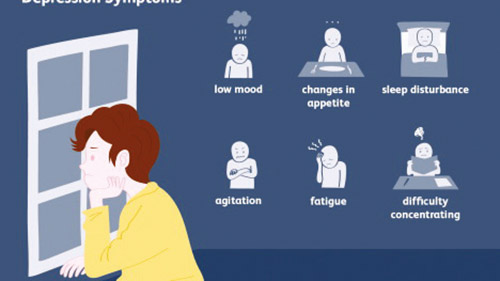
When I was a girl, I had a younger cousin who was diagnosed with migraine headaches. My grandmother did not buy this. She did not believe that children could suffer with such issues as she perceived something like migraines to be an adult ailment. However, medical conditions like migraine headaches affect people of all ages. This is a common theme surrounding the perceptions of childhood mental health conditions. My grandmother would not have believed that children and adolescents could have formally diagnosed major depression. But again, we know very well that adolescents and children can be diagnosed with major depression as well, although with variable presentation as compared with adults.
Such layers of distinction in presentation between adults and children experiencing major depression include:
- Mood. You would assume that depression would present as just that sadness, as it does in adults, but more frequently children will describe their mood as “irritable,”, “angry,” or “annoyed.” I often hear the phrase, “Everybody is on my last nerve!” from child patients experiencing depression. This is a common reason why depression is often missed in children.
- Sleep. Typically, adults will experience difficulty with falling asleep and insomnia, while children with depression are more likely to be overly tired and sleep excessively. These kids will come home from school, nap for hours, and go straight back to bed after their nightly routine.
- Appetite. As opposed to adults who often lose their appetite when depressed, kids tend to overeat. Depressed children will often have increased cravings for simple carbohydrates like bread, cakes and cookies. These cravings, combined with a lack of interest in exercising and excessive sleeping, may lead to weight gain.
Other areas which have similar presentation in adults and children with depression include:
- Loss of interest. Individuals will describe feeling like they have no energy or motivation. Kids may stop wanting to play or hang out with their friends, and they may isolate themselves in their rooms.
- Difficulty concentrating. This can be reflected in children and adolescents as failing grades, or difficulty with meeting expectations that they were previously meeting. They also might start refusing to attend school at all.
- Self-harm. Self-harm is an understandably sensitive topic to address. Self-harm often occurs in children and adolescents with depression. It can include actions such as cutting, often with easily accessible things like blades from pencil sharpeners or their own fingernails. The most common areas to look out for are the wrists or arms, ankles, thighs or belly.
Quite often the kids who self-harm are attempting to relieve stress or tension and not acting with suicidal intent. However, engaging in self-harm behavior increases a child’s risk for suicide. Usually these types of cuts are superficial and do not require sutures or medical attention. Still, self-harm should be taken seriously and be brought to medical and psychiatric attention as needed. - Suicidality. It is also imperative to look out for suicidal thoughts in children with suspected or diagnosed depression.
- Psychosis. In severe cases, children can also develop psychotic symptoms like hearing voices, feeling paranoid or more rarely seeing things that others do not see. Often, these voices say negative things such as “you are worthless,” “nobody likes you,” “you should kill yourself.”
Unfortunately, the COVID pandemic, with it’s social distancing mandates, school closures, online learning and added stress, has increased the rates of depression and suicidal thoughts in our child and adolescent population. So what are we to do to look out for the young population at this time?
Treatment
There have been many studies that show that the most effective treatment for major depression involves the combination of both talk therapy and medications.
- Therapy. For younger kids, a lot of the therapy is accomplished through play therapy, which utilizes games and artwork. This can be accomplished through cognitive behavioral herapy, which addresses underlying beliefs and generalizations that can worsen depression, and other structured treatments like resiliency training and group therapy.
- Medication. Parents are understandably hesitant to start their children on medications for mental health conditions, which is why we often start treatment with therapy and add medication only as needed. There are many different medications that are used to treat depression. Treatment with medication should be under the supervision of a physician who can monitor potential side effects and adjust medications as needed for optimal outcome.
- If you think your child has major depression or another mental health condition, be sure to see a mental health professional as soon as possible.
Dr. Suzanne Lind is a board certified child and adolescent psychiatrist practicing at St. Mary’s Mental Health Center and St. Mary’s Hospital in Passaic. Dr. Lind received her medical degree from Robert Wood Johnson School of Medicine where she completed her intern year. She subsequently completed residency training at Thomas Jefferson in Philadelphia and a fellowship in child and adolescent psychiatry at New York University. She lives with her husband and two children in New Jersey. She enjoys traveling, spending time with her family and pets, as well as gardening.
Sheindel Ifrah Goldfeiz is a third-year medical student at TouroCOM-Harlem and COO-CFO of the Jewish Orthodox Women’s Medical Association (JOWMA). She completed a BA in special education and subsequently earned her post-baccalaureate in basic health sciences at Temple University. Sheindel resides in Passaic NJ with her husband and two kids and enjoys spending time with her family and Pilates.










